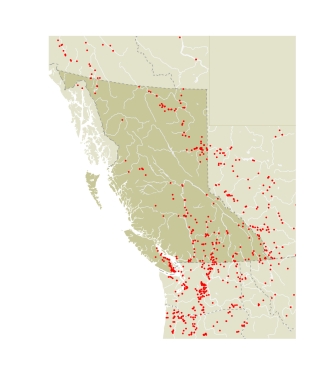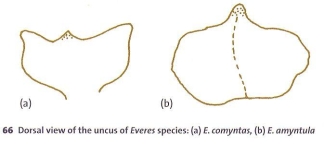The Western Tailed Blue flies from late April to mid-June in the south and into July in the north; there is one generation per year. Hardy (GAH) observed oviposition on Vicia americana in late April. Hardy also found eggs on a stem of Lathyrus nevadensis var. nuttallii, near the flowers. The eggs hatched on 10 May and mature larvae quit feeding by 8 June. The larvae remained dormant through 12 October. Apparently Hardy did not get the larvae through the winter.
Outside BC, others have observed eggs laid at the base of developing pods of the larval foodplants, including Astragalus and Lathyrus. The newly hatched larva bores into a pod, seals the opening, and completes larval development undisturbed. In California, where there are two generations per year, Wright (1884) found that the second-generation larvae go into hibernation. He assumed that they did not pupate until the following spring.
|
|

